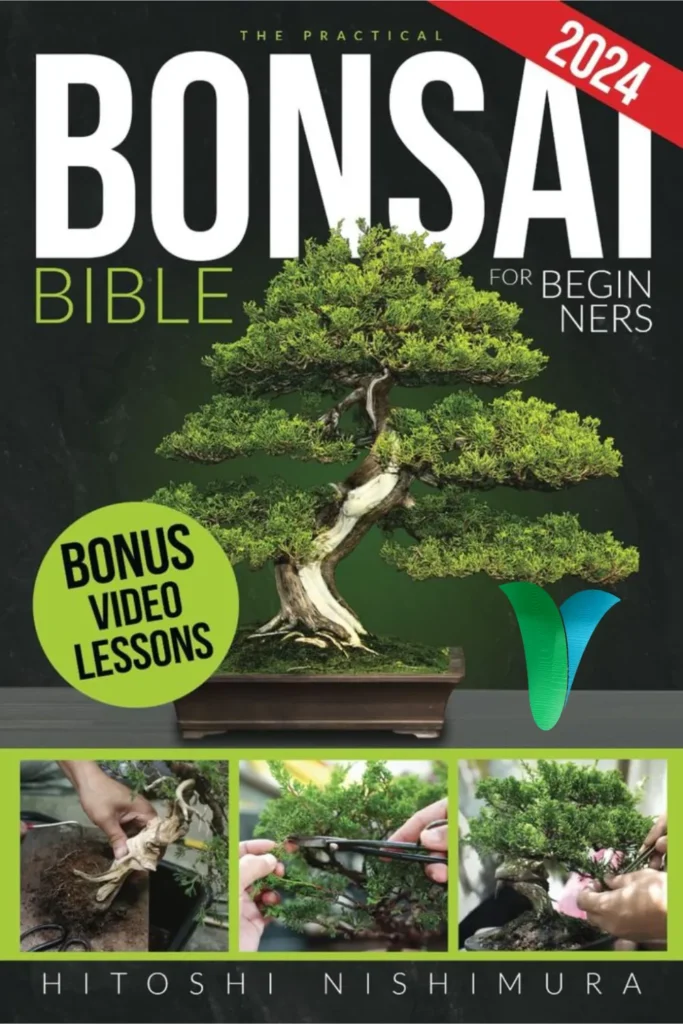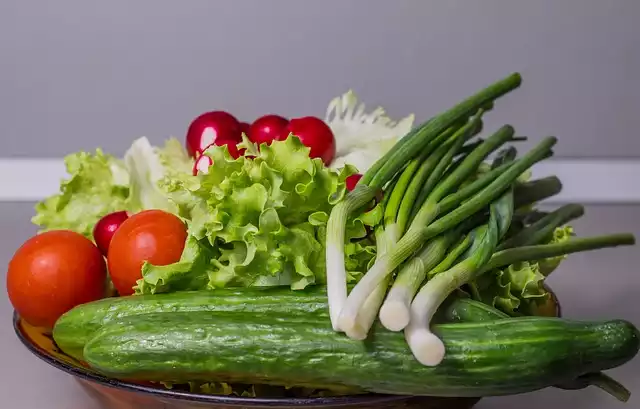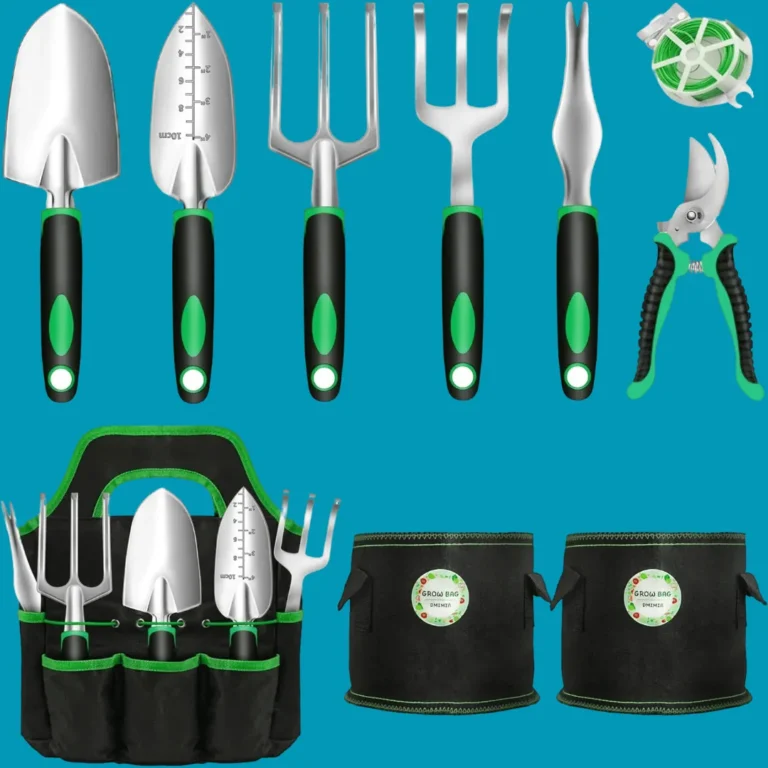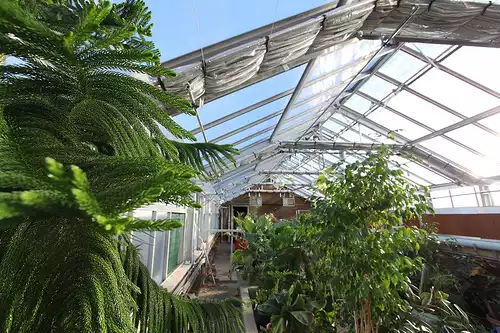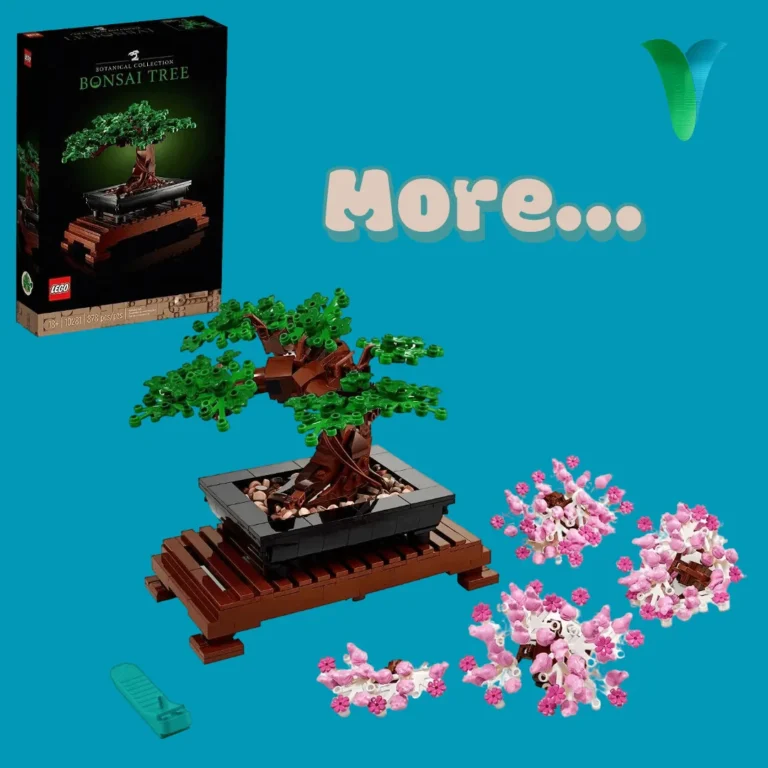How to Take Care of a Bonsai Tree
Diving into the ancient art of bonsai can feel like stepping into a vast, mysterious forest—an endeavor both enchanting and slightly intimidating.
For novices, mastering how to take care of a bonsai tree often seems wrapped in complex tradition and precise technique, akin to learning an exotic language.
Yet, imagine holding the key to unlock this botanical riddle; a guide that demystifies every detail of caring for these miniaturized marvels.
Enter The Practical Bonsai Bible for Beginners, your vividly illustrated roadmap through the intricate pathways of bonsai cultivation.
This comprehensive manual is crafted with the beginner in mind, transforming what appears as elaborate puzzles into straightforward steps anyone can follow.
From selecting your very first tree to understanding the nuances of watering, pruning, and positioning it for optimal health and aesthetics—every chapter unfolds with clarity and purpose.
Whether you dream of nurturing a stately juniper or a bloom-adorned azalea bonsai, this guidebook equips you with the foundational expertise to commence your journey confidently.
Prepare to embark on an extraordinary voyage into the world of bonsai, where patience rewards and beauty resides in detail.
If you’re a beginner in the world of bonsai, you may find yourself overwhelmed with the amount of information available on this ancient art form.
From choosing the right tree to mastering the techniques of pruning and shaping, there is a lot to learn.
But fear not, for this article will serve as your practical bonsai bible, providing you with all the essential information you need to start your journey into the world of miniature trees.
Whether you are drawn to the peacefulness and mindfulness of bonsai or simply want to add a touch of nature to your home, this guide will equip you with the knowledge and skills to successfully care for and create your own bonsai trees.
So let’s dive in and discover the beauty and intricacies of bonsai together.
Table of Contents How to Take Care of a Bonsai Tree
Choose a suitable location for your bonsai tree
To ensure the healthy growth and development of your bonsai tree, it is crucial to carefully select a suitable location.
Consider the specific requirements of the bonsai species you are cultivating, as different trees have varying preferences for sunlight, temperature, and humidity levels.
Ideally, choose a spot that provides a balance of sunlight and shade throughout the day, as excessive exposure to direct sunlight can scorch the leaves and hinder growth.
Additionally, avoid placing your bonsai tree near sources of extreme temperature fluctuations, such as air conditioning vents or drafty windows, as this can cause stress and damage to the delicate foliage.
Maintaining a consistent temperature and humidity level is key to promoting the overall health and vitality of your bonsai tree.
By diligently considering these factors, you can provide an optimal environment for your bonsai tree to thrive.
Understand the watering needs
To effectively care for your bonsai tree, it is essential to understand its watering needs.
Bonsai trees require regular and consistent watering to maintain their health and vitality.
However, the frequency and amount of water required may vary depending on factors such as the species of bonsai, the size of the pot, and the climate in which it is being grown.
As a general guideline, it is recommended to water your bonsai tree when the top layer of soil feels slightly dry to the touch.
Avoid overwatering, as this can lead to root rot and other detrimental issues.
On the other hand, underwatering can cause the tree to become dehydrated and suffer from stunted growth.
To ensure proper watering, consider using a moisture meter or inserting your finger into the soil to assess its moisture level.
Adjust your watering schedule accordingly, keeping in mind that bonsai trees may require more frequent watering during hot and dry periods.
By understanding the watering needs of your bonsai tree and providing it with the appropriate amount of water, you can support its overall well-being and longevity.
Trim and shape regularly for growth
To promote healthy growth and maintain the desired shape of your bonsai tree, it is crucial to trim and shape it regularly.
Trimming your bonsai tree not only helps to manage its size but also encourages the development of new branches and foliage.
By removing excess growth and unwanted branches, you can create a more visually appealing and balanced tree structure.
Additionally, shaping your bonsai tree allows you to cultivate its unique aesthetic and artistic expression.
Use sharp and clean bonsai pruning shears to make precise cuts, ensuring minimal damage to the tree.
When shaping, consider the natural growth patterns and desired style of your bonsai tree.
Whether it be formal upright, informal upright, or cascade style, regular trimming and shaping will contribute to the overall health and aesthetic appeal of your bonsai tree.
Remember to maintain a balanced approach and avoid excessive pruning, as this can cause stress to the tree and impede its growth.
In the next section of “The Practical Bonsai Bible for Beginners,” we will delve deeper into the art of trimming and shaping your bonsai tree for optimal growth and visual beauty.
Fertilize with balanced nutrients monthly
To ensure the optimal health and development of your bonsai tree, it is important to fertilize it with balanced nutrients on a monthly basis.
This practice provides the essential elements that promote robust growth, vibrant foliage, and overall vitality.
Balanced fertilizers typically contain a blend of nitrogen, phosphorus, and potassium, along with trace minerals necessary for the tree’s proper nutrition.
These nutrients help to fuel photosynthesis, strengthen the roots, and support the tree’s immune system against pests and diseases.
Applying the fertilizer in the recommended dosage and frequency, based on the specific needs of your bonsai tree species, will help to maintain its nutritional balance and prevent deficiencies.
Additionally, it is advisable to choose organic or slow-release fertilizers, as they release nutrients gradually and minimize the risk of over-fertilization.
Remember to water your bonsai tree thoroughly before and after fertilization to prevent root burn and ensure proper absorption of the nutrients.
By following this monthly fertilization routine, you will provide your bonsai tree with the necessary nourishment for long-term health and vitality.
Protect from extreme temperatures
To ensure the optimal health and longevity of your bonsai tree, it is crucial to protect it from extreme temperatures.
Sudden temperature changes, whether hot or cold, can cause stress and damage to the delicate foliage and root system of the tree.
During periods of intense heat, it is vital to provide shade for your bonsai to shield it from direct sunlight and prevent overheating.
This can be achieved by placing it under a canopy or using shade cloth.
Similarly, during freezing temperatures, it is essential to protect the tree from frost by moving it to a sheltered area or using insulating materials such as burlap or frost blankets.
By taking these precautions, you can safeguard your bonsai tree from the detrimental effects of extreme temperatures and promote its overall well-being.
Repot every 2-3 years.
Properly repotting your bonsai tree every 2-3 years is a fundamental aspect of its care and development.
Over time, the roots of your bonsai will naturally fill the container, becoming dense and compacted.
This can hinder their ability to absorb water and nutrients, leading to stunted growth and poor health.
By repotting, you not only provide your bonsai with fresh, nutrient-rich soil but also give its roots the space they need to thrive.
Repotting allows you to trim back and prune the roots, stimulating new growth and promoting a healthier root system overall.
When repotting, be sure to choose a new container that is slightly larger than the current one to accommodate the growth of the tree.
Additionally, carefully remove the old soil, taking care not to damage the delicate roots.
By following these guidelines and repotting your bonsai tree regularly, you can ensure its continued vitality and enhance its aesthetic appeal as it matures.
Use proper soil mix.
To ensure the health and vitality of your bonsai tree, it is essential to use a proper soil mix.
The right soil composition plays a crucial role in providing the necessary nutrients and drainage for your bonsai’s root system.
When selecting a soil mix, aim for a blend that is well-draining yet retains enough moisture to support the tree’s hydration needs.
A high-quality bonsai soil mix typically consists of a combination of organic materials such as peat moss, compost, and pine bark, along with inorganic components like perlite or pumice to improve aeration.
Avoid using regular garden soil as it tends to be too heavy and can lead to root rot.
By using a suitable soil mix tailored to your bonsai’s needs, you can create an optimal environment for root development, ensuring the long-term health and vitality of your cherished tree.
Observe for pests and diseases.
Regularly monitoring your bonsai tree for pests and diseases is a critical part of its care.
By observing for any signs of infestation or illness, you can take prompt action to prevent the spread and protect the overall health of your bonsai tree.
Look out for common pests such as aphids, spider mites, and scale insects, which can cause damage to the leaves and weaken the tree over time.
Additionally, keep an eye out for any abnormal discoloration, wilting, or deformities in the foliage, as these could be indications of diseases or nutrient deficiencies.
If you notice any issues, consult a specialist or refer to reliable resources on bonsai care to identify the problem and determine the appropriate treatment.
Regularly practicing pest and disease observation as part of your bonsai tree care routine will help ensure the longevity and vitality of your miniature masterpiece.
In conclusion, this practical bonsai bible has provided you with a comprehensive guide to getting started in the art of bonsai.
From selecting the right tree and tools, to understanding the techniques of shaping and maintaining your bonsai, this book has equipped you with the knowledge and skills necessary to succeed.
Remember to always approach bonsai with patience, care, and dedication, and you will soon be able to create your own miniature masterpiece.
With continued practice and a willingness to learn, you can truly become a bonsai master.
So go forth and start growing your own beautiful bonsai creations!
FAQ
What are some common mistakes beginners make when caring for bonsai trees, and how can they be avoided?
One common mistake beginners make when caring for bonsai trees is overwatering.
Remember to only water when the soil feels dry to the touch, and ensure proper drainage in the pot.
Another mistake is improper pruning, so be cautious and only trim small amounts at a time.
Additionally, make sure to place your bonsai in the right amount of sunlight and avoid sudden changes in temperature.
By staying attentive to these details and researching proper care techniques, you can avoid common pitfalls and help your bonsai thrive.
How often should bonsai trees be watered, and what are some signs that indicate a bonsai tree is being over or under-watered?
You should water your bonsai tree when the soil feels slightly dry to the touch, typically every 2-3 days.
Signs of over-watering include yellowing leaves, mold growth, or a soggy soil texture.
On the other hand, signs of under-watering include dry and crispy leaves, wilting, or soil that is extremely dry.
It’s important to monitor the moisture levels regularly and adjust your watering schedule accordingly to keep your bonsai tree healthy.
What are some essential tools and supplies that beginners should have on hand for maintaining their bonsai trees?
As a beginner caring for bonsai trees, you should have essential tools like pruning shears, scissors, wire cutters, and a concave cutter.
Additionally, supplies like bonsai soil, fertilizer, a watering can, and training wire are crucial for proper maintenance.
These tools and supplies will help you shape, prune, and nourish your bonsai trees to promote healthy growth and maintain their aesthetic appeal.
Remember to regularly check and adjust the soil moisture, trim branches properly, and provide adequate sunlight to ensure your bonsai thrives.
With these basics on hand, you can start your bonsai journey with confidence.
How can beginners determine the appropriate size and style of bonsai tree for their living space and skill level?
To determine the right bonsai tree for your living space and skill level as a beginner, consider factors like available light, temperature, and humidity in your home.
Start with a small and hardy tree like a Ficus or Jade plant for easy care.
Choose a tree that fits your living space without overcrowding it.
Research the specific care requirements of the bonsai tree species you are interested in and choose one that aligns with your skill level.
Remember to start small and gradually work your way up to more challenging species as you gain experience.
What are some key principles of bonsai tree styling and shaping that beginners should keep in mind when working with their trees?
When styling and shaping your bonsai tree as a beginner, remember to focus on balance and symmetry, ensuring that branches are evenly distributed.
Keep in mind proportionality and scale to create a harmonious design.
Practice patience and avoid rushing the process, as bonsai styling is a gradual art form that requires time and care.
Always consider the tree’s natural growth patterns and adapt your techniques accordingly.
Finally, regularly prune and wire your bonsai to maintain its shape and health, while also allowing room for growth and development.
By following these key principles, you can create a beautiful and well-crafted bonsai tree.

